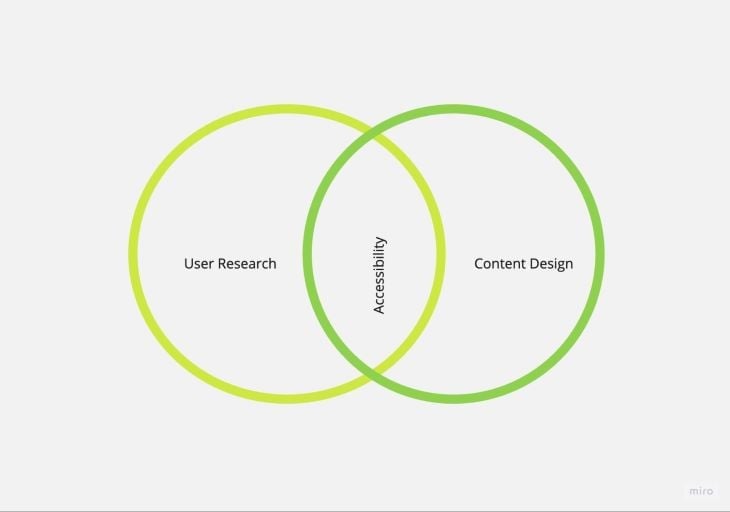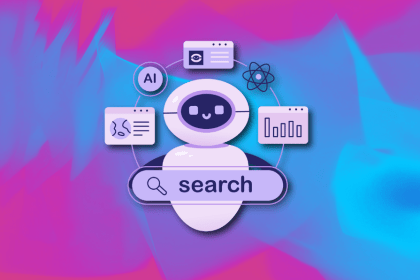Content design is more than just writing. It’s about guiding users through a digital product by delivering clear, relevant content at every stage of their journey.

But what does “relevant content” actually mean?
In this article, we’ll unpack that by exploring the role of content design in the product design process. We’ll look at what content design is, why it matters, the role of content designers, and how they blend UX thinking with storytelling to create user-first experiences across platforms.
Editor’s note — This post was extensively updated by Chinwe Uzegbu on 16 May 2025 to provide clearer definitions, answer common reader questions, and better reflect how content design fits into modern UX and product development workflows. We’ve refreshed key sections, added a new FAQ section, and sharpened comparisons between content design, UX writing, and content strategy.
Content design is a user-centered approach to planning, creating, and structuring content (words, visuals, and flows) in digital products. It uses research and data to give users the information they need, when they need it.
Coined by Sarah Winters (formerly Richards), founder of Content Design London, the term emphasizes designing with words as a key part of user experience, beyond just writing copy.
But why does content design even matter? Let’s break it down:
Ultimately, effective content design is key to creating an exceptional digital experience. And a content designer is responsible for making this happen. Now, let’s zoom in on their role in the product design process.
Content designers craft clear, helpful digital content that balances what users need and what the business wants to achieve. That balance matters because content isn’t just there to sell; it exists to help users get things done.
To make that happen, content designers are typically responsible for the following in the design process:
Content designers write clear, purposeful digital copy such as error messages, onboarding content, button copy, navigation labels, placeholder texts, etc.
They also conduct usability testing on the content to assess its effectiveness and make iterations based on user insights, to ensure every word guides the users toward their goal.
Content designers organize information in a way that makes it easy for users to understand and act on. They break complex content into digestible bits, using clear headings, labels, and ample white space to guide the user’s attention. This thoughtful structure helps users navigate a product and achieve their goals.
Your company’s tone of voice and branding are the biggest differentiators in content design. When used effectively in content design, tone of voice and branding help to:
HubSpot, a marketing software company, is a good example of this. Their blog posts are informative and educational, while their social media posts are often conversational and engaging, each corresponding to the platform’s goals.
Accessibility and inclusion are non-negotiables when it comes to digital content. They do more than just ensure a product meets legal and ethical standards; they also guarantee equal access and usability for all users:

Content designers are a key part of cross-functional product teams. They work closely with UX designers, researchers, product managers, and developers throughout the product’s lifecycle.
Some common tools you’ll find in a content designer’s tool stack include:
Now that we’ve covered what content designers do and the tools they use, let’s look at the key principles behind creating relevant content.
How are UX design and content design intertwined? They’re both user-centered at their core.
User-centered content creation focuses on putting the target audience’s needs and goals at the forefront of the content development process. Content designers keep these principles in mind while developing (or refining) their content strategy. Here’s how to do it:
Conduct thorough audience research to understand the target users’ characteristics, preferences, and pain points. Use surveys, interviews, analytics data, and other forms of research to gain insights into user behavior. Content designers may partner with research teams to accomplish this. Some helpful UX artifacts from user research could include user empathy maps, user personas, and user flow diagrams.
Define clear content objectives aligned with user needs and business goals. Content designers should understand which actions they want users to take after engaging with the content and tailor it to support those objectives.
Based on the results of their user research, they can analyze and generate objectives. For instance, those objectives can be:
Effective information architecture is a cornerstone of user-centered content. Content designers work closely with the whole UX team to plan how information is structured and organized. A clear and intuitive content structure enhances UX, supports accessibility, improves discoverability, and makes content more scannable.
Even though information architecture is a discipline on its own, it’s something content designers must understand. To create effective structures that support users, take note of the following strategies:
Check out our guide to organizing and categorizing content in information architecture to learn more.
Designing accessible and inclusive content ensures that everyone, regardless of ability or background, can understand and use your product. Content designers can support this by:
Content testing and iteration are key parts of content design that help content stay relevant, meet user needs, and deliver its intended goals effectively.
By testing regularly, you can validate your assumptions with real users, ensuring the content is user-focused and aligns with the audience’s needs and expectations. Testing helps you identify what works and what areas need improvement or refinement.
Iterating content based on user feedback is more cost-effective than starting from scratch and ensures that the content evolves with changing user behavior, trends, and technology.
We’ve discussed the principles behind great content, but when exactly does all this come into play? Let’s look at how content design fits into the bigger picture of product development.
Content design is crucial to the product development process, not an afterthought. And as such, it needs to be integrated early on and across all key phases of the process:
Now let’s look at how they collaborate with various UX team members to make this happen.
As we established earlier, content designers work alongside product team members — UX designers, product managers, developers, and researchers — throughout the product life cycle. Let’s dive deeper into how they work with each of these team members:
Content designers work with researchers by participating in usability tests, interviews, and other forms of research to understand user behaviors and how they interact with content. This collaboration helps identify areas for improvement and provides valuable insights into the effectiveness and usefulness of content.
Content designers work with UX designers from the start, contributing to wireframes and information architecture. This helps ensure content aligns with the user flow and supports easy navigation and task completion.
Content designers partner with product managers to align content with user needs and business goals. They identify the key tasks users need to complete and prioritize content accordingly. Additionally, they craft effective content for feature flows to guide users through the product.
Content designers work with developers to ensure content is technically feasible and implemented correctly. They provide clear guidelines, manage content strings, and help structure content for consistency, accessibility, and adaptability across platforms.
Now that we’ve seen how content design fits into the product development process, let’s explore how it differs from similar roles, like UX writing and content strategy.
You’ve probably seen terms like content design, UX writing, and content strategy thrown around, sometimes used like they mean the same thing. So, are they interchangeable? Not quite.
While all three disciplines prioritize user outcomes and task completion, each has a distinct role:
UX writers focus on microcopy, i.e., the words users encounter in interfaces, such as error messages, button text, and instructions. Their main goal is to guide users seamlessly through a product by providing clear, concise, and helpful text.
Content design, on the other hand, goes beyond words alone. Content designers take a holistic view of the user experience, considering how the text, images, video, structure, hierarchy, messaging, voice, tone, etc, work together to guide users through the product.
Content strategy sets the foundation by defining what content is needed, who it’s for, and how it’ll be managed over time. Content strategists don’t typically write or design content, but are responsible for planning the content ecosystem, e.g., style guides and editorial calendars.
Content designers take the roadmap laid out by the content strategist and bring it to life. They transform the strategic vision into clear, concise, and user-friendly content that aligns with the overall goals and enhances user experience.
But what does this look like in practice?
Say a company is launching a new mobile banking app. Here’s how the content strategist, content designer, and UX writer work together on the project:
| Role | Focus | Key activities | Deliverables |
| Content strategist | Long-term content planning | Defining goals, audience, and governance | Style guides, content plan, audits |
| Content designer | Holistic user experience | Research, strategy, writing, structuring, testing | UI copy, flows, microcopy |
| UX writer | Microcopy for product interface | Crafting concise UI text | Button text, labels, interface messaging |
You made it this far, well done! We’re about to wrap things up. But before we do that, let’s address some commonly asked questions about content design.
Content design is the process of planning, creating, and structuring content to help users achieve their goals within a digital product. It’s more than just writing; it’s about understanding the users and designing relevant content (text, visuals, structure) for every stage of their journey.
Content designers research user needs, design user-centric content, and collaborate with UX teams to ensure the content supports the user journey. They aim to make it easy for users to understand information at every step of their experience.
Not exactly. Content design is a discipline within the broader field of UX (user experience). While UX designers focus on the overall experience, i.e., the look, feel, and functionality of a product, content designers focus specifically on the information that guides users through the experience.
UX writing is a subset of content design that focuses on microcopy, i.e., the words users encounter in interfaces, such as error messages, button text, and instructions. Content design takes a holistic view of the user experience, considering how the text, images, video, structure, hierarchy, messaging, voice, tone, etc, work together to guide users through the product.
Right from the start! Content design should begin in the discovery phase and continue through planning, development, launch, and beyond. Bringing content designers in early helps them understand user needs and craft clear and helpful content aligned with the overall experience from the start.
Copywriting focuses on persuading users to take a specific action, like signing up or buying something. Content design, on the other hand, focuses on helping users complete tasks and navigate products smoothly.
To put it simply, copywriting sells while content design guides.
Strong writing skills are a must, since you’ll be working with words a lot. But content design goes beyond writing. You’ll also need to be good at structuring information, thinking strategically, and collaborating with cross-functional teams. A solid grasp of UX and accessibility standards is essential, too. And if you can use design tools like Figma, that’s a plus.
Content design is more than just writing the words in an interface. It’s about solving problems, guiding users, and creating seamless digital experiences. By combining UX thinking with storytelling, content designers ensure they craft relevant content that helps users achieve their goals.
But remember, content design isn’t a band-aid that can be slapped on to fix usability issues in a product. Rather, it’s a core part of the product development process. As such, content designers must be involved from project kick-off to launch and beyond. That way, the content can evolve alongside the user and business needs.
In the end, great content isn’t just a nice-to-have; it’s essential for retaining users and, ultimately, achieving business goals.
LogRocket's Galileo AI watches sessions and understands user feedback for you, automating the most time-intensive parts of your job and giving you more time to focus on great design.
See how design choices, interactions, and issues affect your users — get a demo of LogRocket today.

Discover how to craft UX-friendly hero sections with examples, design tips, and strategies that drive engagement and conversion.

While Apple’s Liquid Glass can’t yet be perfectly recreated with CSS or Figma, we can still think about how to adopt the effect thoughtfully in our designs.

Figma Make is here to automate your design-to-code workflow. I tested it. Let’s talk about the good, the bad, and the straight-up weird.

After designing AI search systems, I’ve seen what builds trust — and what kills it. Here’s my take on what really works.